"I went into a clothing store, and the lady asked me what size I was. I said, 'Actual'. I'm not to scale." -Demitri Martin
When you look out at the Universe, what you can see is limited, at the most fundamental level, by the size of what you look with. This is why you can see dimmer objects at night -- when your pupils are dilated -- than you can when your pupils are constricted.
This same principle that applies to your eyes applies to telescopes as well. As telescopes have grown in size, so has our ability to see deeper into the Universe, as we can collect more light and view dimmer, fainter objects. Things that would have appeared imperceptible to us with less sophisticated equipment suddenly explode into view, brilliant and distinct.
In fact, as a consequence of telescopes getting larger, we can not only see deeper and farther, we can also see with higher resolution! These dim objects not only become visible to us, they also come into focus.
The reason for this? Astronomically, the resolution you can see with is determined by how many wavelengths of the light you're looking at can fit across your telescope! Scientifically, this is known as the Rayleigh Criterion, and it basically tells you that every time you double the diameter of your telescope, you not only quadruple your light-gathering power, you also double your resolving power.
Or, if you want to double your resolving power without building a telescope twice as large, you can look at shorter wavelengths of light!
The shorter the wavelength of your light, the tinier the imperfections in your surface are allowed to be. For a gamma-ray telescope, the highest quality optics are demanded, while with a radio telescope, tremendous dishes (or arrays of dishes) are required to obtain even modest resolution, but the optical quality can be fairly lax. If the size of your telescope is fixed, wavelength is everything for determining resolution.
But if you're determined to use a particular wavelength of light, then the converse is true: size is everything. For human beings, we've used visible light for far longer than we've had telescopes, and so that has a fixed wavelength. You want to get better at it? You build a bigger telescope. And for some time, that's been exactly what we've been doing.
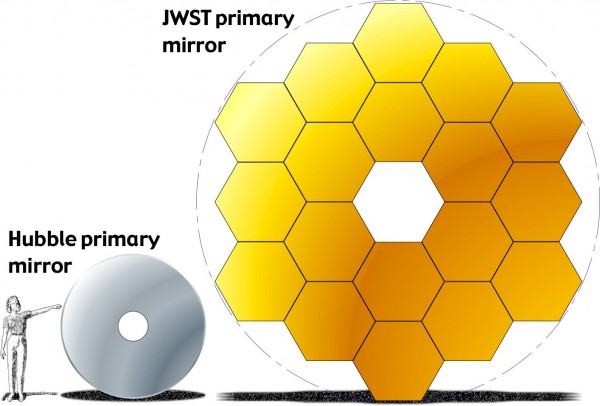
Image credit: NASA, with the 2.4-meter diameter HST mirror and JWST's segmented 6.5-meter diameter optics.
While space has been the best environment for achieving these maximal resolutions, recent advances have allowed ground-based telescopes, despite having to contend with atmospheric distortion, to catch up. Most recently the 8-meter, ground-based Gemini Telescope has revolutionized adaptive optics so significantly that, for the first time, a ground based telescope has defeated the optical resolution of Hubble!
Well, if size is everything for optical resolution, the largest telescopes in the world -- the 10-meter class giants -- are about to have their hats handed to them. A new record-breaker, or I should say record-demolisher, was just approved by the European Southern Observatory consortium.
And, I promise you, you've never seen anything like it.
Sure, it may look like any giant, isolated telescope on the top of a high desert mountain, where the air is thin and rarefied, the skies are clear, and light pollution is virtually nil. But looks can be deceiving; this telescope is unique in all the world.
You've never seen this before: an observatory that's literally the size of a football stadium! (Or, equivalently, a fútbol stadium.) But it's the telescope inside -- with a set of primary optics nearly 40 meters in diameter -- that shatters all the records. Unlike Hubble's single mirror, which is a bit larger than a human, or James Webb's segmented design, with a honeycomb of 18 human-sized mirrors, this new telescope features a primary mirror made of 798 segments, each 1.4 meters across.
For a cost of just over 1 billion Euros (it is an ESO project, after all), the European Extremely Large Telescope (E-ELT) will become the world's largest eye on the sky. How much larger and how much more power will it have? In fact, the E-ELT will gather more light than all of the existing 8–10-metre class telescopes on the planet, combined.
But the first thing to be built won't be even one of these giant segments; the first thing to begin construction will be the adaptive optics system; one of the most challenging bits. Remember how adaptive optics works?
You take what you see through the atmosphere -- distortions and all -- and, by focusing in on a "guide star" (or series of guide stars) whose properties are known, you build an "adaptive mirror" that literally un-blurs the image for you!
But how do you make a fluid-like mirror that can adapt in real-time to the changing atmospheric distortions? It isn't that the mirror itself is fluid, it's that it's thin enough that it can be mounted on an electronically-adaptive system!
The flat mirror that rests upon this apparatus will be about 2.5 metres in diameter but just 2 millimetres thick, allowing it to be deformed like a flexible film. More than five thousand voice-coil actuators will flex the shape of the reflecting surface of the mirror up to a thousand times per second, precisely canceling out the distorting effect of the atmosphere. (See here for more details.)
The result is an adaptive mirror that gives us a final image that's comparable to what we'd get from a space telescope, except getting a 40-meter-diameter telescope in space is a pipe dream at this point!
While a whole slew of revolutionary science will come out of this, including measurement of the first stars, the earliest galaxies, and unprecedented high-resolution imaging of pretty much anything you can imagine, the biggest victory will go to those on the hunt for exoplanets. Because with this new E-ELT, we'll be able to directly image exoplanets as small as Earth around stars many hundreds of light-years away.
In just a generation, we'll go from knowing just one star with exoplanets around it to direct imaging of thousands of Earth-sized (and possibly Earth-like) worlds around distant stars.
This is why we invest in science; this is what we can achieve.

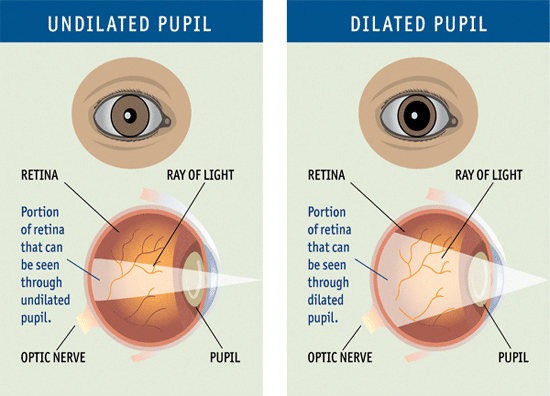
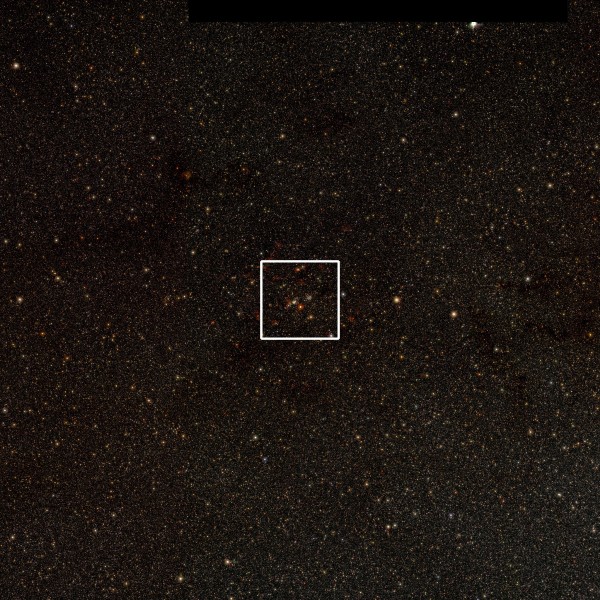
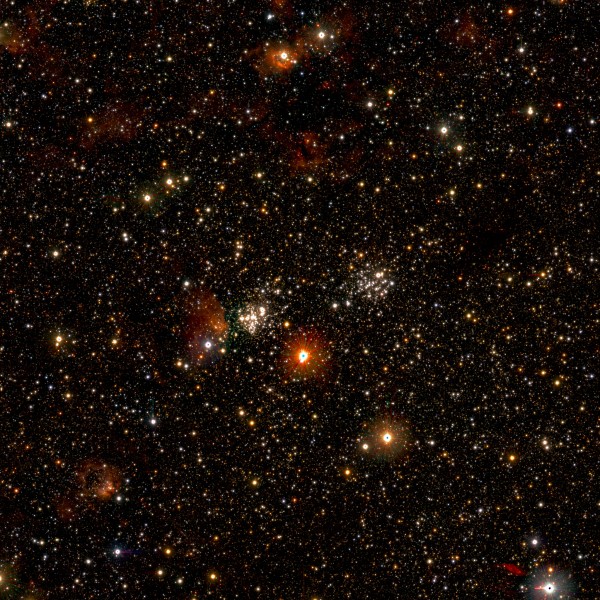
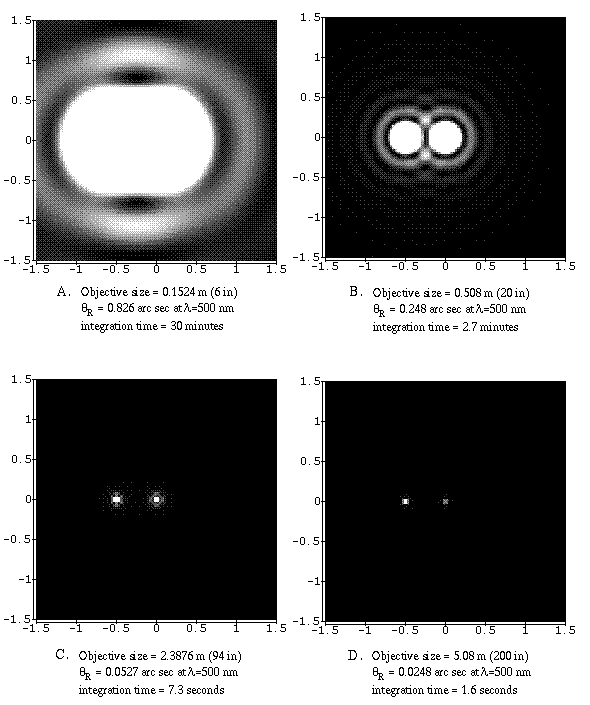
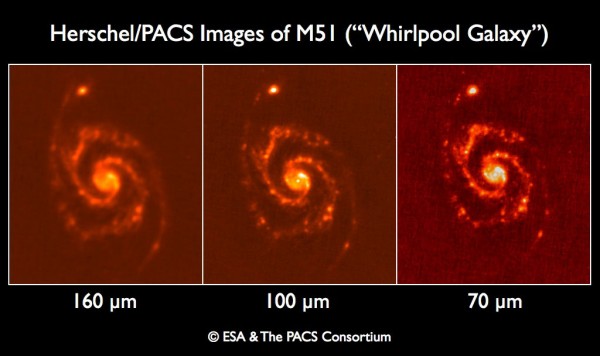
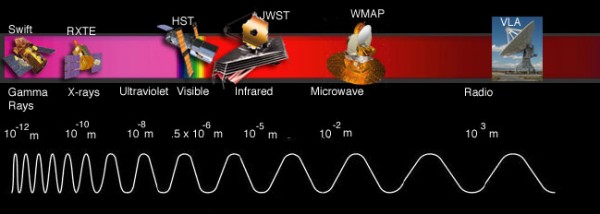

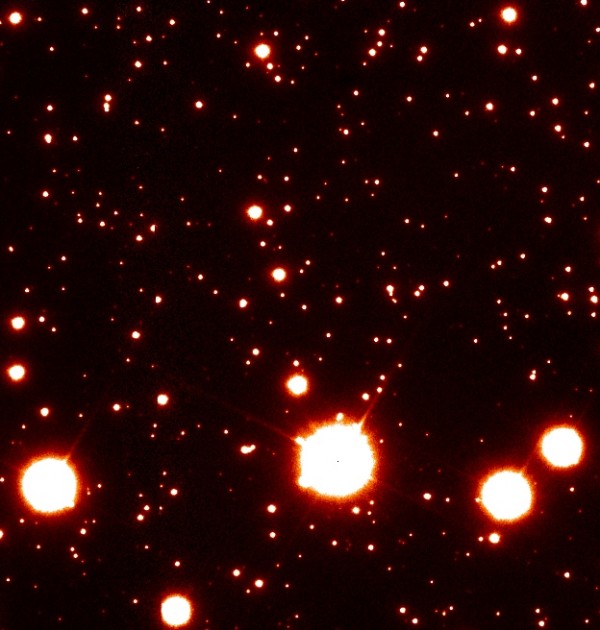
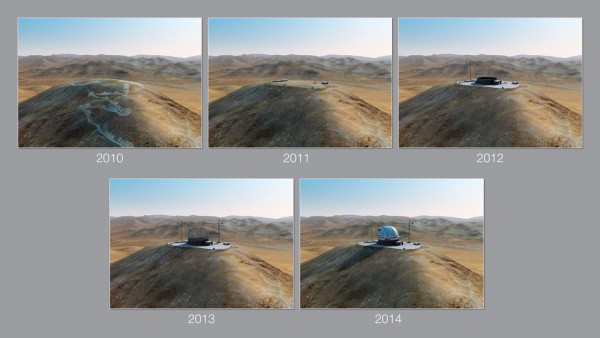
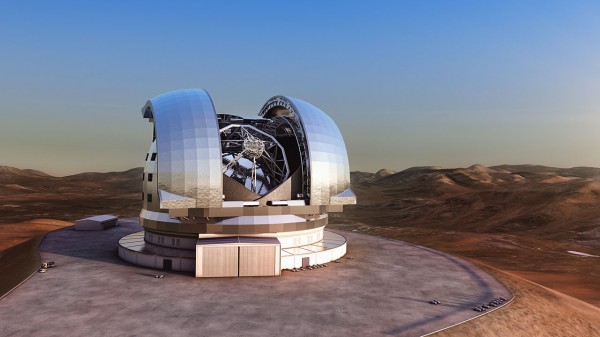
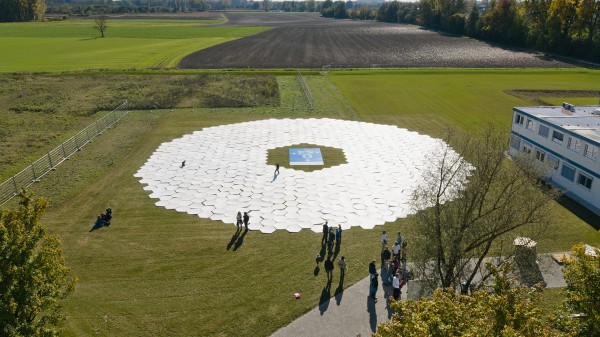
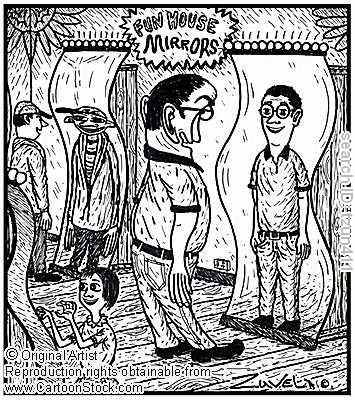
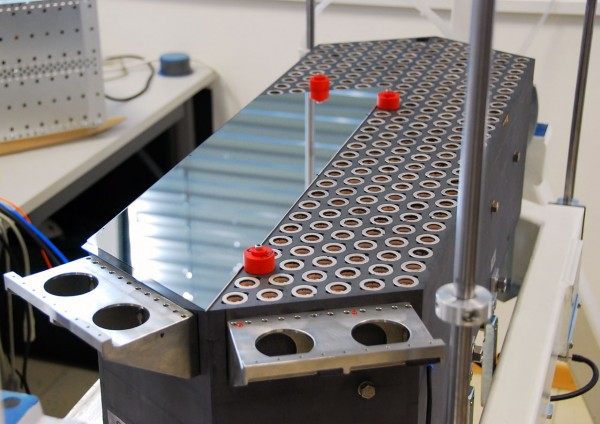
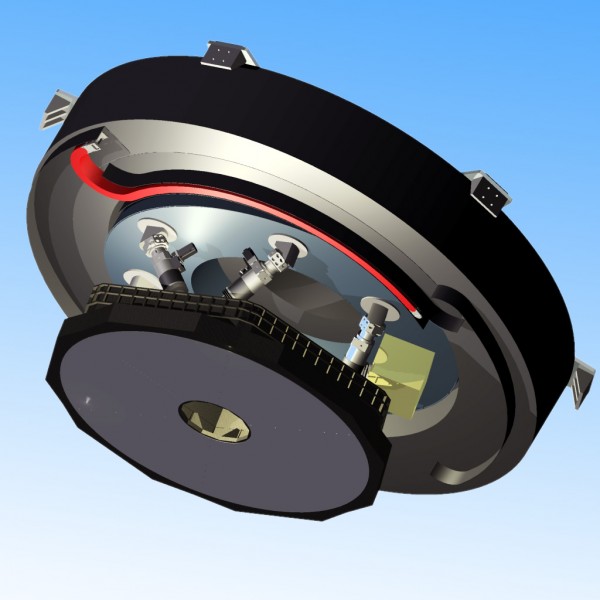
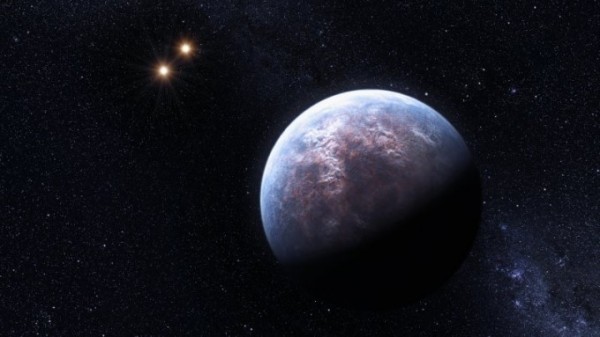
Awe inspiring.
Mind = blowed.
The picture of the dome at several stages of construction might cause the reader to think that the project will be finished by 2014. I believe that the projected date on which the telescope will begin operations is closer to 2022; is that right?
Isn't exposure the key for getting great images, how can this one beat the Hubble's two week stare into deepspace, while it is rotating on the earth or do they both have to deal with the same issues?
Btw Ethan could you comment on those spy-telescopes that were recently in the news and that might be better than Hubble:
"But the 94-inch aperture on the NRO optical system will permit Hubble-class resolution over a wide field-of-view - imaging a swath of the sky 100 times larger than Hubble can see in a single exposure."
http://www.spaceflightnow.com/news/n1206/04nronasa/
Excellent Exoplanetary Lumbering Telescope (E^2 LT) will be my moniker. Nice to see Europe beating US in their own game (going at it alone).
Speaking of excellent, the article is thorough as always.
Though getting the best images can be a problem without a telescope too, another potentially confusing image is the eye one. Instead of illustrating how a dilated pupil collects more near enough parallel light rays from a really distant object to a focal point (if we are sticking with the ray model), it illustrates how a dark adapted eye uses more of the retina.
@ Chelle:
Q1: As I understand it the two telescopes would in principle deal with the same Earth, Sun et cetera occlusion/lighting problem. Most of the time they would have less than half the observation time on the same target, and you would simply continue integrate for longer exposures.
Q2: I would imagine that the Kepler paraboloid mirror was optimized for seeing astronomical sources. A more spheroid mirror would suffer from spherical abberation, meaning either fuzzier stars (partly or more offset by the larger FOW it seems from this article), or more expensive correcting optics.
In practice I would imagine these telescopes will come better out anyway. Kepler was misconstructed and never exactly paraboloid as I understand it, which is why it got (a more expensive) correcting optics at individual cameras and loosing some FOW (I think) in the process. It should have seen further than it ended up doing, but I dunno how much.
I forgot, I hope someone who actually do these things pitch in and correct my naive understanding on astronomical issues.
[I'm here for the cosmology (interest) and, as here, astrobiology (hobby). YMMV.]
What is of real interest to me is NOT that this will be the biggest baddest telescope on planet Earth!!
What interest me is, what we don't know that we think this telescope might help us understand.
So here is a whole book on what we don't know, but hope to clarify and maybe learn with the E-ELT http://www.eso.org/sci/facilities/eelt/science/doc/eelt_sciencecase.pdf
An Expanded View of the Universe
Science with the European Extremely Large Telescope
Be patient loading this book took me a few minutes (in a separate window) but worth the wait.
Second of this report http://www.eso.org/sci/facilities/eelt/science/doc/htra-white-paper-V1…
A SCIENCE CASE FOR HIGH TIME RESOLUTION ASTROPHYSICS
This report says, "High Time Resolution Astrophysics (HTRA) concerns itself with observations on short scales normally dened as being lower than the conventional read-out time of a CCD (charge coupled device)... Giving the European-Extremely Large Telescope (E-ELT) an HTRA capability is therefore of paramount importance. We suggest that there are three possibilities for HTRA and E-ELT.
Now this leads me to the question, does the E-ELT have HTRA capability yet? What exactly is High Time Resolution Astrophysics (HTRA), you ask. "Traditionally, optical astronomy has been concerned with timescales measured from minutes and hours to years. Sub-minute and particularly sub-second timing has been largely unexplored primarily due to instrumental/detector limitations." Nice.
Long exposures means you receive more photons, so you see dimmer objects. It won't increase your resolving power, however. For that, only meters matter.
Hubble does have a much easier time if it's looking out of the plane of the ecliptic, then it can observe the same target continuously. If the target is in the ecliptic plane, then it can't actually look at one target for that long because it's in a 90 minute orbit so the earth is in the way on a regular basis, but for a lesser percent of the time than the earth gets in the way of ground-based observation. Either way integrating multiple exposures is the way to go.
This is effin amazing but could they really not come up with a more ambiguous name for the telescope? This is going to be a big deal and will undoubtedly get a lot of coverage in the next bit and every time I see/hear E-ELT i'm going to face palm. Picking four adjectives out of a hat would have even been better...lol.
Hi Ethan,
Long time. I agree with the above comment. The retina example for light correction is misleading. The angle that a ray comes into the lens with determines where they will be focused onto the retina. This placement of rays from different external angles to different locations on the retina is what determines the image that is sent to the brain.
The dilation of the pupil has nothing to do with the amount of retina used... The dilation of the pupil just lets more photons from the same location to be allowed through the eye and be focused onto the same place on the retina. In both cases pupil retracted and pupil dilated, the same amount of retina is used.
And an excellent article I might add. I loved learning about how the atmospheric distortions will be countered.
Very, very cool. But I have to be pedantic and say that that eye image is utterly (and perplexingly) wrong. It's like they've completely forgotten the lens exists. The pupil is just like the aperture on a camera - widening it lets more light in, with the trade-off that more out-of-focus light gets in so the focal plane is narrowed. Narrow or wide aperture, either way the whole sensor (or retina) is irradiated.
The eye pupil diameter IS a limit to how MUCH light gets in. And in astronomy, since stars are a point source, the wider your pupil dilates, the dimmer an object you can discern.
More light coming in? More light getting to the retina.
It's a view from an astronomer's perspective. Exit pupil is quite an important parameter because it gives you the limit of how low a magnification you can usefully use.
The standard eye is taken to be 5mm in aperture. A 25mm eyepiece on an F5 scope has an exit pupil of 5mm, therefore going any longer will only reduce the size of the object, not increase its brightness.
Younger people can have an exit pupil of 7mm, and a 32mm eyepiece on the same scope (exit pupil 6.4mm) will reveal more to them where it will not for an older person.
Though this is more a rule-of-thumb than accurate. There are some who say that you still get some benefit for a wider exit pupil.
I will add that the picture is misinforming by using a cone. It should be a cylinder. And the wider your eye dilates, the wider the cylinder, therefore the more light comes in.
The other alternative would be to reverse the cone to show how a point source plane parallel light wave concentrates more light on the same size spot.
But, as it is, the picture given is entirely misleading.
Adaptive optics are an amazing technology. Though coming from the field that I do, I wonder if it wouldn't be possible to accomplish the same thing in software more cheaply? Even if an image is blurry, all the data is THERE, assuming nothing is blurred to outside the field of view. I'd sort of think that the hard part is computing HOW to unblur it, which the adaptive optics system would require anyway, but then actually DOING it could be done either way. But of course as a software guy myself, I'm biased. I still find it phenomenal either way.
In essense the use of webcam imaging and stacking produce much the same effect.
However, it's not possible to achieve the effect of adaptive optics in software. You may be getting confused with the use of deconvolution which can, for example, fix optical defects in images by running a simulation of the (incorrect) optics and inferring the actual paths of light. This is not easy and is an ill-defined problem (there are several answers that would be correct, only one of which is the actually correct one). This is what was done with the early Hubble space telescope images, when they knew precisely how malformed the reflector was and corrected the blurred images. Getting the right optics up there made a better picture still, but it was quite effective at making the images they had better.
@Wow
"I will add that the picture is misinforming by using a cone. It should be a cylinder. "
That wouldn't change a thing, because the retina is separated into Rods an Cones (no pun intended)
Rods: See in black, white, and shades of gray and tell us the form or shape that something has. They are super-sensitive, allowing us to see when it's very dark.
Cones: Sense color and need more light than Rods to work well. Cones are most helpful in normal or bright light. There are 3 types of cones - red, green, and blue - to help you see different ranges of color. Together, these Cones sense combinations of light waves that enable our eyes to see millions of colors.
Here are some images and an overview:
http://tinyurl.com/Rods-Cones-eye
http://tinyurl.com/Rods-Cones-table
http://tinyurl.com/Rods-Cones-overview
I must admit; optics is not my cup of tea; but I'm listening to your discussion, learning and appreciating your cup of tea.. thanks.
That's crazy - and I was thinking the Keck and Geminis were monstrous telescopes. The planned Giant Magellan Telescope is ~24m, just a little more than half that diameter.
JWST will still have incredible advantages over even this monstrous telescope - the resolution and light collection abilities won't compare but it will have access to the entire infrared spectrum; terrestrial telescopes are blind to most of the range and where they're not blind there is still (variable) atmospheric attenuation or atmospheric emission.
"That wouldn’t change a thing, because the retina is separated into Rods an Cones"
It would change everything. It would make it more accurate and less confusing for a start.
But you're just being deliberately obtuse.
Why? God knows.
@Wow
"It would change everything. It would make it more accurate and less confusing for a start."
I don't think so, a cone is in any case more realistic than that cylinder that you propose. Because light falls into the eye from all directions, humans have with both eyes almost a view-field of 180°. When light falls through the pupil and the lens, it goes through that one hole (point/5mm) and is project all over the retina similar to this )))>0<)
And maybe for 'color-view' the light that falls into the eye, from straight in front onto the Macula, looks like a cylindrical projection, but the cylindrical aspect is defined by the cone-cells that processes only a section of the incoming light (colors), and not by how the light globally falls into the eye, this is why I added some links.
And a human eye also processes what it sees differently than a telescope which projects all light back towards one optic element, in a conic way.
I know you don 't think so.
But that's because you're being deliberately obtuse to troll.
The picture people were complaining about doesn't have the rods and cones of the retina and your asinine statements about rods and cones is just you trolling.
Or you being a moron. I'm OK withe either explanation.
@Wow,
Why are you being so spiteful? All I'm doing is making a few remarks here and there, and asking some questions that interests me. You are the only one here that has the need trow personal insults when you are being corrected, I think that it's a rather childish manner of defending you opinions. Anyway, I'll stop commenting on your posts, because you don't seem to be able to take any heat. Take care.
Why? Because I'm not.
It is spiteful to pretend that someone has the right answer when they haven't (hence all the people who can't spell because they were never told what they tried was wrong).
"All I’m doing is making a few remarks here and there"
And that's all I'm doing. But apparently this is spiteful. Because you're trolling and now tone trolling.
Passe.
You're not correcting me, you're being an arsehole trolling.
This has gone sour and your last comment, makes it even more so. Maybe indeed it is just me with my bad spelling who shouldn't be here, and if you see me as a 'tone troll' because I'm addressing your impoliteness than so be it. I guess bravo mission accomplished. Take care.
Nope, don't have a problem with someone's spelling.
But you've added nothing other than an irrelevant side-track into rods and cones in reply to a message talking about something completely different.
I do have a problem with that.
It is a troll. And you're doing it.
Sorry, but all I want to do is enjoy myself reading and learning about science, and participating in the debates by sharing my own views, and have an open discussion about things. But you start to accuse me of trolling just because I say that your idea of a cylinder wouldn't change a thing and bring up Rods & Cones, and after I clarified my argument you start to become even more insulting. What's the point? I have the impression that you have some deeper personal issues cause otherwise I just don't get it, why else would you be so hostile towards me, there is absolutely no reason in this debate to call me; deliberately obtuse, a moron, or an arsehole. It seems that you have a problem maintaining some self control, I hope you can figure it out. Take care.
Chelle, you're wrong: light DOESN'T form rods and cones!!!
It forms corpuscles of quantised energy in the form of photons which doesn't form a cone or rod of light! You've been watching too much Star Wars!
"you’re wrong: light DOESN’T form rods and cones!!!"
Are you serious? I never said anything that light forms rods and cones. I menioned that it is being processed by rod- & cone cells that make up the retina. I've provided some links.
Not even in Star Wars does someone come up with such a crazy idea, only here at 'Starts With A Bang' : )
Yes I am serious: you're wrong, light forms corpuscles of light NOT rods and cones.
If you ate going to insisted that light does form rods and cones, WHERE IS YOUR EVIDENCE?
Doesn't exist, does it.
Because you're wrong: light doesn't form rods and cones!!!
This is becoming more and more absurd. All the time have been talking about biology ... and you keep pushing forward; that I say that light forms rods and cones. I never said such a thing. This all seems to be one big misunderstanding.
So I'll ask you to check this wiki page, if you don't like those other links: http://en.wikipedia.org/wiki/Photoreceptor_cell
"The two classic photoreceptor cells are rods and cones, each contributing information used by the visual system to form a representation of the visual world, sight."
This has gone sour and your last comment, makes it even more so.
'sfunny. Here's a clue for you: go read where I talked about the retina.
Hint: I didn't.
Yet you whine along and start flapping your fingers at how the retina has rods and cones. And, despite several attempts to tell you you're talking rubbish, that I'd never talked about the retina, you never clock on, but repeat your rabbiting diatribe.
When I return the favour, you IMMEDIATELY spot the problem.
How DUMB are you to get it so very desperately wrong?
OK, maybe not dumb, but entirely self-obsessed and ignorant, which is pretty dumb for a social animal like a human.
PS you're still wrong. Photons don't form rods and cones!!!
http://en.wikipedia.org/wiki/File:Visible_EM_modes.png
Here, have a look at the picture:
http://scienceblogs.com/startswithabang/2012/06/12/sometimes-size-is-ev…
you blithering idiot.
Are you an alcoholic? Because all the post that I've been making here are pretty straight forward, there is absolutely nothing special about them. I have even explained that Rods & Cones are the names of a type of photoreceptor cells that are found in the Retina, just like hair cells can be found in our ears, to pick up sound waves. But still you keep coming up with the idea that Photons don't form rods and cones, that's weird.
I've been thinking that you were trying to take the Mickey out of me for personal fun, but your choice of words makes me suspect that your vision is just blurred. Yes I've been using the word 'cone' in two variations; as a cell, and as the shape in which light falls in our eyes, but someone with a clear head should have had no difficulty with spotting the difference. Take care.
Are you an idiot? What I've been posting is pretty straight forward, there is absolutely nothing special about them. I have even explained that the picture used to illustrate the effect of pupil dilation would be better explained with using a cylinder rather than a cone to illustrate the collection of light in the eye. But you still keep coming up with the idea that this picture needs rods and cones.
Ah, yes, you are an idiot.
Chelle and Wow
What a strange argument.
Wow's remark (June 14, 5:59 am) about cylinders versus cones is entirely correct.
Chelle responds (June 14, 9:33 am) incorrectly and then obviscates by discussing rods and cones. What Chelle says about rods and cones seems correct; but it has nothing to do with either Wows clear point or the point of Ethan's post.
Wow is correct: for whatever reason, Chelle seems to be deliberately disagreeing with Wow and offering up evidence that has nothing to do with the discussion. So whether Chelle's evidence is correct or incorrect is irrelevant to the point of discussion
But as is his usual, Wow responds belligerently to such nonsense. Wow uses his favored insults (e.g. moron, idiot, etc.) as well as reasoned facts.
And the debate is on. It's not worth following, except that Chelle postures as the hurt innocent who just wants to learn and discuss. Then Chelle further paints Wow as a raving "alcoholic" who is "trying to take the Mickey out of me for personal fun" and continues "but your choice of words makes me suspect that your vision is just blurred." Hmm what's going on.
Chelle in my mind is goading Wow on to make Wow look the fool; to discredit Wow (not for this post) for a more politically serious post. Like what? Answer:Global warming.
Consider Ethan's May 24, 2012 post
It’s Getting Hot in Here, So Take Off… The Whole Planet?
This post is about an evaporating exoplanet.
Here is Chelle's first remark on that exoplanet post about
May 25, 2:56 am
"Great article, but It looks like it’s being sandblasted, or sunblasted, instead of boiling and evaporation. It might be still cold under the sputtered surface just like the moon is freezing under its warm surface."
Chelle sees that there is a subtext about climate change in this exoplanet post so he fights the science about a boiling exoplanet and the science about Mercury to undermine any climate change arguments about Earth should they arise on this post or another.
Let me be clear about my opinion of Wow.
In the last few days Wow has called me and "idiot" and a "moron" and I don't like that. I'm neither and I wish he would choose different words. But Wow is one of the commentors on the Start with a Bang blog who will fight the antiscience thugs (who troll and sometimes overload this blog with antiscience political blather about e.g. climate change) with reasoned science. I don't have the patience that he does. I'm glad he does.
So in my mind, Chelle has initiated a pre-emptive strike to discredit Wow before the next politically important topic comes up on this blog.
Don't fall for Chelle's girlish innocence.
Wow is sometimes too harsh with casual curious bloggers. But even then he surrounds his insult with with sound science.
But Chelle despite his protestations is not a casual curious blogger. His purpose as implied by the content of his many comments is political obfuscation not scientific discussion.As Shakespeare said, "The lady doth protest too much".
Ok, great, now you understand what rods & cones are about. Next you should try to understand that light goes through that 5mm pupil of yours and is projected like a very wide cone on to the retina, and that if it was like a cylinder you wouldn't have the panoramic view that you have. But hey, judging from our little discussion you might be right and you could indeed be a specimen that has tunnel vision, and than a cylinder is correct.
And you have no clue what you're talking about, helle.
Absolutely no freaking clue.
Moronic, yet blissful idiocy is your state.
I WAS NEVER TALKING ABOUT THE FREAKING RETINA YOU BATSHIT LUNATIC.
Thanks for the summation, OKThen.
And I agree that you don't have to like the way I do things, nor have to condone, follow or even condone them. I can't say my way is the right way, only my way.
Unlike chelle and other deniers (and fun die faithiests) you can disagree with me and I'll accept you may be in the right.
We won't agree with each other merely because we agree AGW is real. Deniers never will (see the contortions to avoid denouncing death and rape threats from climate deniers to families of climate science). Because to them truth and honesty are expendable casualties in their Holy War for libertarian dogma.
Haha Wow, some great supporter that you have there : D
If someone sees my comment of Mercury being Sun-blasted (sputtered) vs. Boiling as an argument to discredit the science about Mercury to undermine any climate change arguments about Earth, than that person has a lot, and I mean A LOT of imagination! It just doesn't get any wilder than this, lol.
Sure OKThen, I have some political views about the LHC and Black holes and have expressed clearly, if you look than it wouldn't be hard to find them, I'm not even surreptitious about them, I speak my mind. But Global Warming is the least of my concerns, honestly. Regarding our planet it does bother me though that the Amazon rainforest is being chopped down in favor of soya, and I find overfishing a form of genocide, and air-pollution just plain dirty, but if it would get globally a little warmer I wouldn't mind, that shit is hyped.
And no, what Wow said in his post at June 14, 5:59 am, is not correct, or do you also have tunnel-vision? Did you saw how pissed he got, it's because he can't handle being wrong. So it's not because he's Wow that everything he says is 'wow!' don't let yourself be fooled.
And I didn't call Wow an 'Alcoholic' I only questioned if he was one, and with reason, because he just doesn't seem to be able to control his temper. If you run through his comments on this post after I corrected him, it surely will make you raise a few eyebrows.
btw here you are 100% wrong:
"Don’t fall for Chelle’s girlish innocence"
To be or not to be,
I just checked, and I'm not a girl.
Chelle, Michelle
Whatever.
So if your not out here just to troll and obfuscate
----then listen and learn or bring some critical thinking to the table.
I've read your comments for months;
----you consistently ignore scientific evidence and promote unexamined political beliefs as scientific.
Here's a anti-science quote from your most recent comment June 27, 1:07 pm (above).
"...but if it would get globally a little warmer I wouldn’t mind, that shit is hyped." It doesn't take much imagination on my part to realize that Chelle or is it Michelle is very anti-science on climate change.
Wow has the science right.
You Chelle or Michelle have got the "political science" of the anti-science right.
But this is a science blog, not an anti-science blog.
So I respect Wow's screaming "Moron, idiot, BATSHIT LUNATIC"when he is defending and correctly explaining science.
I do not respect in Chelle or is it Michelle's anti-science; even if it is accompanied by girlish protesting, "Why are you being so spiteful?", whining "Maybe.. it is just.. my bad spelling", crying, "all I want to do is enjoy myself reading and learning about science", accusing "Are you an alcoholic?", mocking "you could indeed be a specimen that has tunnel vision", and false indignation, " I’m not a girl." Maybe you aren't a girl; but Chelle/Michelle you are a drama queen. And Chelle/Michelle doesn't get science.
p.s. regarding my metaphors, let me be clear Lady Gaga is one smart lady and she gets it.
Anyone remember chelle's soon-to-be-released paper? The onethat would 'prove' that the universe is screwing or something?
Doesn't seem to have appeared.
Maybe chelle's got a hate-on for me now my prediction has come to pass.
"Chelle, Michelle
Whatever."
My name is Michel (aka Victor Von Doom) and where I come from they put an 'e' behind the name, like Italians love to put a 'y' after every boy's name such as John -> Johnny, Tom -> Tommy, Joe -> Joey, Mark -> Marky. So where I live in Latveria it would be Johnneke, Tomme, Jokke, Makke.
There is nothing girlish about that, it's rather straightforward, but yes if you're not accustomed to that it might be strange.
--
"... then listen and learn or bring some critical thinking to the table."
Go to the 4th comment of this list, and yes I got a great answer from Torbjörn Larsson and learned something, without any further dispute.
--
"“…but if it would get globally a little warmer I wouldn’t mind, that shit is hyped.” It doesn’t take much imagination on my part to realize that Chelle or is it Michelle is very anti-science on climate change."
If global warming isn't hyped than what is? An iPhone is also hyped, does that mean that it is wrong or a bad product?
And don't push someone who's being critical into a corner and call him "anti-science" because you don't like what he or she is saying. It closes the door to open debate, and your Global Warming quickly becomes like a religion. Yes there is lot's of good proof, but there are many, many parameters that play a role. That's why I rather focus on specific clear facts that are harmful to nature such as the Rainforest cutting, overfishing, air-pollution ... but if YOU like to look at the global picture than go ahead.
--
"Wow has the science right."
So you do have tunnel-vision.
--
"You Chelle or Michelle have got the “political science” of the anti-science right.
But this is a science blog, not an anti-science blog."
Haha, because I question Wow and the fact of tunnel-vision vs. panoramic-view I have become anti-science, and I am even an anti-science right. It seems that you love to polarize, don't you think that there are a lot of right-wing voters all around the world that love science just for the sake of making money. What about all those capitalist companies that put billions into research & design, accumulating patents en masse for billions of dollars, for which we the people have to slave.
You got all the symptoms of a religious nut following the leader because he or she said so. You're not smart enough to know what it's about so just defend the one with the aura, making yourself useful in one way or the other, shame on you. If after all the arguments that I bring up you still don't want to see what is clearly right or wrong, than that is sad.
--
"So I respect Wow’s screaming “Moron, idiot, BATSHIT LUNATIC”when he is defending and correctly explaining science."
No wonder, you are not bad at doing a little nagging yourself, one has to defend their own kind.
--
"I do not respect in Chelle or is it Michelle’s anti-science; even if it is accompanied by girlish protesting, ..."
I can imagine that once you have an idea in your head of me being a girl, just because of my name, that whatever I wrote might come across as if it was in a girlish manner, that's okay, and it must be hard for you to change that perception. Besides that, I have only addressed Wow's uncalled-for insults, every normal human being, man or a woman would do so. Like you say this is a science blog, so it's not a barfly blog I suppose.
--
"p.s. regarding my metaphors, let me be clear Lady Gaga is one smart lady and she gets it."
Sure she would get the difference between tunnel-vision and panoramic-view, that is; the difference between a cylinder and a cone, which is also the cause of all this mumbo jumbo, many kudos for her.
@Wow,
"Maybe chelle’s got a hate-on for me now my prediction has come to pass."
No, you're are right about that one. I said that I would get it done in one or two months. Its going to take much longer. I now hope to get something finished next year, sorry for making false promises ... I guess I'm no different than NASA with their too many delays.
Yup, so like I said: Nothing.
@Wow,
"Yup, so like I said: Nothing."
I wouldn't say 'nothing'. I do have quite a lot of results, and lot's of progress, but still a lot of testing needs to be done. Anyway, thanks for your support ... or are you now anti-science ^_^
Yes, nothing.
Chelle chill.
"girlish" is metaphor, not about your sex or sexual orientation
"anti-science" is about dismissness to scientific evidence (e.g. " if it would get globally a little warmer I wouldn’t mind").
You're right, you "learned something... from (your) Torbjörn Larsson" discussion. My apology for my insults.
As for illogically bringing retina rods and cones into the discussion of cylinders versus cones; perhaps your misunderstanding is sincere and not meant to obfuscates.
As for Wow, his scientific thinking is clear; and he attacks non-science and nonsense. When the anti-science bigots pile up 300 to 500 comments on one of Ethan's posts; Wow is one of the few reasoned scientific thinkers who street fights scientific ignorance blow for blow. Wow is a pro-science guard dog. Thanks Wow. Or should I say Bow Wow.
So when sometimes Wow unfairly attacks me as a scientific "moron"; my scientific and personal integrity can take it. It's just a nip and he is my dog.
I suggest all of us pro-science folks move on to Ethan's next topic "The Strong Force for Beginners". I'm out of here.
"perhaps your misunderstanding is sincere "
Except chelle had the same "trick" pointed back at her and IMMEDIATELY noticed the problem:
"I didn't say anything about photons..."
It would have to be a severe brain damaging event to allow that to happen AND STILL "misunderstand".